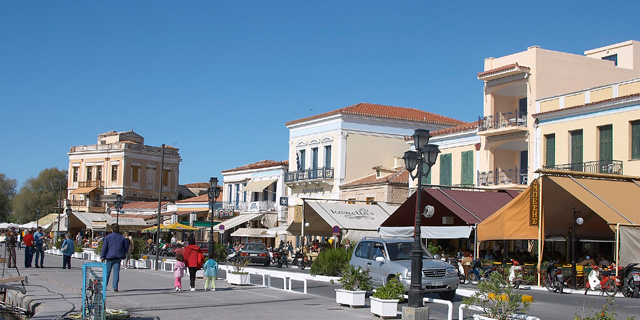Culture and history info
During your stay on the island, you can visit the following museums and sightseeings:
Museums:
Archaeological museum
Historical and folklore museum
Aphea Temple (around the temple of Aphèa)
Christos Kapralos Museum
Governor’s Kapodistrias Residence
In the town of Aegina also call in at:
Markellos Tower (built by Markellos, a 1821 War of Independence hero and later Governor of the island, which now houses the Kapodistrias Spiritual Center), Kapodistrias Orphanage (the first public building during Kapodistrias’ administration), Eunardeio (a 1829 building in Doric style) and Aegina Cathedral (the first Cathedral of the Modern Greek State; it also housed Kapodistria’s Government and the first parliament of the modern Greek State).
Explore ancient monuments and old monasteries:
The Temple of Aphea Athena
Close to Ayia Marina lies the 500 BC Doric Temple of Aphea Athena, the most important monument on the island. The temple was founded there ai it formed an equilateral triangle with the Parthenon and the Temple of Poseidon at Sounion, the so-called “holy triangle” of antiquity. The most impressive part of the temple is its wonderful sculpted pediments, a large part of which is exhibited at the Glyptothek of Munich. Excavation findings are on display at the Archaeological Museum of Aegina.
The Sanctuary of Apollo Delfinios, Kolóna
Located at a short distance from the harbour, the area took its name from a standing column (of Doric type), the only one remaining from a 6th Century BC temple. Mount Kolonas was a religious centre of the ancient town. Archaeological research has revealed the presence of more than ten historical buildings dating from the most recent Neolithic era (5th millennium BC) to the Mycenaean period (1600- 1200 BC). In front of the archaeological site lies a museum bearing the same name.
Palaiohóra, Ayia Marina
The site of Paleohóra represents Aegina during Byzantine times. This site is known as the “Island Mystras” because it once had 565 churches, 28 out of which (with exceptional wall paintings) have withstood the ravages of time, just like the ruins of a medieval castle and two incredible monasteries.
Saint Nektarios Monastery
Near Palaiochora, on the road to Souvala, lies the impressive Monastery of Ayios Nektarios, one of the largest monasteries in the Balkans. It was built in the 20th Century (between 1904 and 1910) on the site of a small Byzantine monastery.
Source: visitgreece

